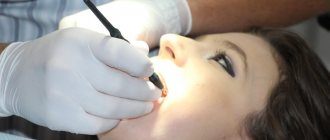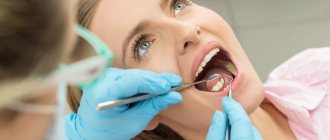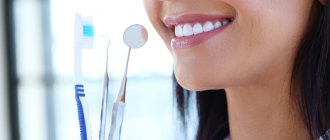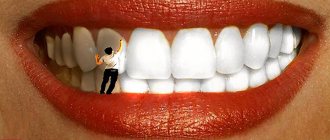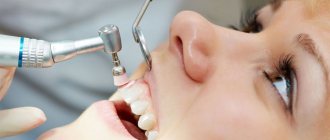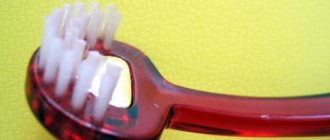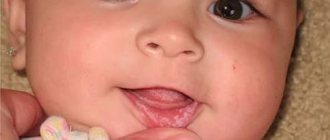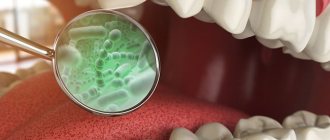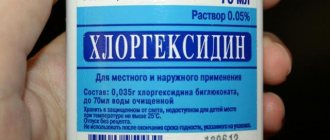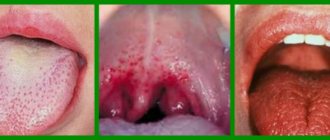How many teeth should a child have?
By the age of three, a child usually already has a full set of twenty primary teeth, and until about 6 years old, their number remains unchanged. Adolescents aged 13 to 18 years should normally have from 28 to 32 molars (depending on the presence of eights, which may erupt after 21 years or not appear at all).
Teenage features
The period of growing up is marked by the completion of the replacement of baby teeth with molars, permanent ones. Forms a bite that will last a lifetime. And bad habits, such as excessive consumption of sweets, fast food, and smoking, cause health problems:
- unpleasant odor;
- swelling of the gums;
- darkening of the enamel.
A teenager is dependent on the opinions of others, so the aesthetic factor is of great importance. Flaws in appearance can affect success in school, communication with peers, and personal development.
Typical problems of teenagers
Doctors at Family Dentistry often work with children and adolescents and know how to deal with the diseases that most often affect them.
Anomalies of the jaw structure
30% of adolescents have jaw anomalies; they can affect both individual teeth (too large or small teeth, rotations, displacements) and the dentition (chapped teeth, malocclusion). Having noticed a defect, the specialist will refer you to an orthodontist, who will select the optimal treatment and bring the bite back to normal.
Temporomandibular joint diseases
A teenager's skeleton is constantly growing, and muscles and ligaments do not always keep up with the bones. Sometimes the lower jaw begins to stretch the ligaments, causing their tone to be lost, severe tension appears and chronic inflammation of the joint develops. This can lead to the early appearance of deforming arthrosis. Doctors at Family Dentistry offer comprehensive measures - first a conservative option (medicines, diet, physical therapy), and if this does not lead to the desired effect, surgical intervention will be required.
Delay in tooth replacement
Often the molars begin to grow before the milk teeth have made room. In such cases, dentists recommend removing the temporary tooth so that the bite can form correctly.
Caries
There are several causes of teenage caries:
- insufficient treatment in early childhood;
- unbalanced diet;
- poor oral hygiene.
In “Family Dentistry”, an individual approach is applied to each patient - they not only heal the affected areas, but also carry out special preventive measures and give advice to parents and teenagers themselves on caring for their teeth and oral cavity.
Plaque on teeth
The composition of saliva changes during adolescence. Eating habits also change - a young person begins to drink tea and coffee more often. Sometimes bad habits appear - smoking, alcohol. All this leads to the deposition of plaque, which causes caries. Dental plaque can only be removed in a clinic, using special dental products.
Juvenile gingivitis
When hormones “rage”, an inflammatory process of gum tissue can develop, accompanied by an increase in tissue volume. Most often, adolescents experience gingivitis of the front teeth. If the disease is not treated, periodontitis will develop.
What teeth appear first in children?
The rudiments of baby teeth and even some molars begin to form at the stage of intrauterine development, so modern diagnostic technologies make it possible to track this process and prevent some deviations. After birth, the first teeth usually begin to erupt when the baby reaches six months of age. This means he will soon be ready to eat more solid foods. In the vast majority of cases, the incisors appear first: as a rule, the lower central incisor becomes the “pioneer”.
Child's front teeth
Since a child’s front teeth usually erupt earlier than the rest, they can be used to track how the baby’s body tolerates this process. It can occur in different ways: some children are practically not worried, while others, on the contrary, experience stress and discomfort. Swelling of the gums at the site of the future tooth, itching and pain, as well as a slight increase in temperature are the main negative aspects associated with the appearance of the first teeth. When teething baby molars, children may experience runny nose and cough.
How do children's teeth grow?
There is no need to panic if the child’s teeth growth does not fit into the above scheme. A delay of 1 - 3 months is considered normal and is associated with the individual characteristics of the body. Children under one year of age often have teeth that do not appear on schedule or may not appear at all. In the latter case, you need to contact your dentist who will help identify the cause.
When is it necessary to remove wisdom teeth?
Whether it is necessary to remove a wisdom tooth or not is the most common question that interests every person who is faced with the problematic eruption of “eights”. For wisdom tooth removal, as for any other surgical procedure, there are indications. Wisdom teeth are removed if:
- There are impacted “eights” - those that are incorrectly positioned in the jaw and cannot erupt, since they rest partially or completely on other teeth
- The “eight” has partially erupted, but there is pain and inflammation in the gums (recurrent pericoronitis).
- For pain along the trigeminal nerve.
- Presence of a mandibular cyst.
- Periodic pain in the area of the wisdom tooth, accompanied by headache, pain when swallowing or other painful conditions.
- Trauma to the oral mucosa as a result of improper tooth positioning.
Tooth growth abnormalities in children
Unfortunately, the development and growth of teeth in children does not always occur as expected: there are a number of anomalies of various types that in one way or another affect the aesthetics and/or functionality of the teeth.
Causes of impaired growth and development of teeth:
- bad heredity;
- fetal injury during pregnancy or birth; intrauterine growth retardation, infections and so on;
- disruption of the endocrine system, thyroid dysfunction;
- lack of vitamins and minerals;
- mechanical, thermal and chemical injuries to teeth;
- bad habits in children that can affect the formation of teeth;
- lack of proper hygiene and poor diet.
Below is a table that describes the most common types of dental anomalies in children.
| Anomaly class | Description |
| Size of teeth | There are microdentia (too small teeth) and macrodentia (too large teeth). The anomaly can affect one or several teeth (and even the entire dentition). |
| Number of teeth | There is partial (lack of several teeth) and complete (absence of all teeth) adentia. Hyperdentia is a supernumerary set of teeth (usually in the second row). |
| Shape of teeth | Cone-shaped, barrel-shaped (Hutchinson's teeth), Pflueger's teeth (the neck is more developed than the coronal part). |
| Anomalies in the structure of enamel and dentin | Hypoplasia (spots and grooves on the body of the tooth), hyperplasia (tubercles, enamel drops, etc.), dentinogenesis imperfecta (violation of the structure and color of dentin). |
| Color irregularities | Enamel pigmentation (gray, black, amber enamel color). Most often it is caused by a disruption of the immune system during the prenatal stage of development. |
| Malocclusion | All types of dental malocclusions: mesial, cross, open, deep and so on. |
Despite the fact that some dental anomalies in children are quite serious, a timely visit to the dentist will help you avoid problems and maintain the health and beauty of your smile. If you let the situation take its course, unpleasant consequences will not keep you waiting.
Teenage dentistry
Why teenage teeth are a separate issue
They are built differently and therefore very vulnerable. The anatomy of an immature (adolescent) tooth is very different from the anatomy of a mature (adult) tooth.
The pulp (nerve) is huge, and the hard tissues - enamel and dentin - are thin, permeable, and poorly mineralized. Hence the peculiarities of the course of dental diseases: caries develops rapidly (due to the vulnerability of the enamel) and quickly turns into pulpitis (the pulp is very close). Since the layer of hard tissue is thin, immature teeth are very fragile and susceptible to injury. The fissures of an immature tooth are deep, with hidden cavities - plaque easily accumulates in them, and caries quickly develops. The roots of an immature tooth are short and wide, the walls of the roots are thin, so such a tooth is not able to withstand heavy loads. After eruption, the permanent tooth takes several more years to “mature.”
image/svg+xml
Such a tooth cannot be treated as an “adult”. What does a doctor do if the nerve (pulp) of a mature permanent tooth becomes inflamed? He will remove the nerve (depulpate the tooth) and fill the canals. After this, the tooth can last as long as desired. If an immature permanent tooth with unformed roots is deprived of its nerve, it will not serve fully, but will crack under stress. Every day in our practice we see teeth hopelessly damaged by such treatment.
An implant cannot be placed. Another scenario for advanced pulpitis of a mature permanent tooth is extraction (followed by installation of an implant). But when treating a teenager, tooth extraction is the last thing the Dental-Service doctor will do. After all, it will be possible to place an implant only after 18 years of age. And the void formed in the dentition will lead to the appearance of gaps, malocclusion, deformation of the facial skeleton and impaired articulation. In adolescents, such shifts occur especially quickly. And one more unpleasant detail. By the time an implant can be placed, the bone tissue at the removal site will have decreased in volume, and implantation will require major surgery to restore it.
There is also no motivation. Parents often believe that the teenager himself is capable of taking care of the condition of his teeth. But, unfortunately, children, as a rule, do not yet have the conscious motivation to carefully care for their teeth. It’s “uncool” for them to brush and floss (twice every day!) and they don’t care about hygiene. This leads to the rapid development of caries.
The situation becomes more complicated if the teenager is afraid of treatment. Here is one of the scenarios that we most often encounter in our practice. A teenager does not brush his teeth and hides it, he develops caries, his teeth hurt, but he hides the pain and drinks painkillers. Parents, unfortunately, are the last to know about this. On the other hand, a teenager is not a child; he is quite capable of overcoming his fear and calmly trusting a specialist (but, as in the case of children, the doctor, of course, must earn his trust). Our doctors always take into account the psychological characteristics of adolescence and do everything to help the teenager emerge victorious from this difficult situation.
Well, who is the smartest here?
Adolescent teeth (permanent, but immature, with unformed roots) are not treated by either adult or pediatric dentists. They require a special approach!
How we treat
Keeping the tooth alive
The main strategic goal of the Dental-Service doctor when working with a developing tooth is to preserve its vitality and give it the opportunity to “mature.” The enamel should gain thickness, and the roots should become long and strong. This is only possible if the nerve remains in the tooth. Therefore, the first thing a doctor does in the case of teenage pulpitis or tooth trauma is to try to keep the nerve (pulp), at least part of it, alive. The doctor uses special biocompatible materials that allow the nerve to survive. Helping him is the amazing vitality of the pulp tissue. Regeneration processes in a teenage tooth are many times more intense than in a mature tooth, and often the pulp is restored even after serious injury. Such restoration occurs, naturally, not spontaneously, but thanks to the purposeful actions of the doctor.
If the pulp could not be saved
Further - more interesting. If the pulp is dead, we use revascularization technology. Briefly it can be described as follows. The root canals are thoroughly cleaned, sterilized, filled with a special medicine and the patient's own cells (blood cells) and then sealed. After several months, pulp-like tissue forms in the canals, which fully performs the role of pulp. CT images show that the tooth continues to develop, roots are forming, enamel and dentin are thickening. In recent years, we have performed several dozen similar operations to preserve tooth vitality.
image/svg+xml
Teenage crowns and inlays
Traditionally, no one installs crowns on teeth with immature roots. Another know-how of Dental-Service teenage dentistry is orthopedic structures - inlays and crowns. Crowns and inlays are made in the Dental-Service dental laboratory from special materials suitable for immature teeth.
Learn more about teen dentistry in our video.
Adolescent dentists conduct appointments
We are supporters of narrow specialization. Only specialization leads to high professionalism. At Dental-Service clinics, teenagers are treated by teenage dentists. All doctors have undergone the necessary training, are proficient in the technologies of working with immature teeth and hone their skills every day.
Microscope only
Technologies for treating immature teeth require powerful magnification. We recommend treating even caries with at least head-mounted optics. The fact is that the enamel and dentin of a teenage tooth are very thin - one extra movement, and the instrument will “fall” into the pulp. When treating canals, there is no alternative to a microscope. When it comes to such advanced technologies as partial removal of pulp tissue from the canal, it is not possible to implement this in practice without a microscope. Under a microscope, the doctor sees the tooth with thirtyfold magnification and uses special instruments. It works as accurately as possible, strictly within the affected tooth tissues. Such gentle treatment significantly extends the life of the tooth.
Microscope's finest hour
To the doctor - maximum magnification. Maximum attention to the tooth. When it comes to root canal treatment on an immature teenage tooth, the microscope plays a vital role!
We are changing dentistry
Teenage dentistry did not appear in Dental Service overnight. This is a lot of work over many years. In order to develop standards for the treatment of teenage teeth, our specialists needed years of practice and clinical observations. We collected information (literally bit by bit!). We studied with specialists all over the world (there is no special training in teenage dentistry). We hope that the emergence of teenage dentistry will radically change the approaches to treating teenagers in our city, and the current generation will be able to be proud of the health and beauty of their smile.
Cool smiley
A young Dental Service patient is immediately visible: a symmetrical face and a healthy, beautiful smile. With our direct participation, a whole generation has grown up who do not know the fear of dentistry!
Healthy teeth are the result of regular prevention and timely treatment
A symmetrical face indicates the normal development of all elements of the system - teeth, bite, joints
Medal for Excellent Hygiene
It is important to regularly check the correctness of your bite with an orthodontist in order to be able to correct it in time.
Healthy joints are formed thanks to correct bite and uniform, effective chewing load.
A beautiful smile and no fear of dentistry!
